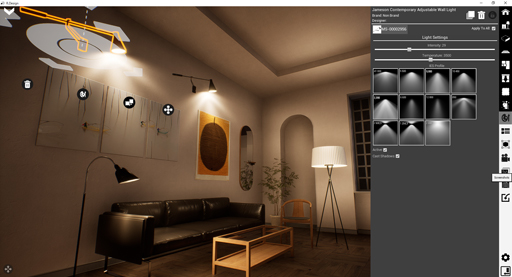
Lotus’s wows customers with more personalised and intelligent experiences on Salesforce
Find out how Lotus’s used Salesforce to completely rebuild its technology environment and wow customers with personalised engagement.
Lotus’s is a popular retail brand that comprises around 2,500+ outlets in Thailand and Malaysia, including small and medium-sized supermarkets and large superstores known as hypermarkets. Founded in 1994 by the Charoen Pokphand (CP) Group, the business changed hands and was held by another entity for twenty-two years before CP reacquired it in late 2020.
The US$10 billion acquisition represented a new start for Lotus’s and an opportunity to modernise and personalise the customer experience. The business also wanted to expand into new areas and double its revenue growth. However, Lotus’s first had to rebuild its technology environment fast. The systems operated by its previous owner did not meet the business’s new objectives and it had two years to migrate away from all 370+ systems of these before incurring substantial costs.
Knowing it could not meet the deadline by building new systems from scratch, Lotus’s looked for a solution that would meet most of its needs out-of-the-box. Lotus’s chose Salesforce, seizing the opportunity to bring teams onto a single customer platform and wow customers with more personalised and connected shopping experiences.
The solution includes MuleSoft which has helped Lotus’s move faster to rebuild its technology environment.
Lotus’s unifies systems and data to unlock new opportunities
In the past, siloed & monolithic systems and data made it difficult for Lotus’s to understand its customers and personalise their experience. The lack of integration between systems also impacted services like ecommerce. For example, the business’ ecommerce platform and inventory management system didn’t talk to one another, which meant items could be ordered even though they were out of stock.
Salesforce has helped Lotus’s address past pain points and take advantage of opportunities to enhance and streamline the customer experience.
MuleSoft, for example, connects Salesforce with platforms such as Lotus’s ecommerce and loyalty platforms so the business can easily orchestrate more personalised experiences. These include communications and promotions tailored to customers’ preferences and past purchases.
Lotus’s has also used MuleSoft to connect its ecommerce platform with its inventory management system. This enables near real-time updates on stock, helping the business achieve 98% accuracy in product inventory, improve product availability and preventing customers from ordering out of stock items. In the future, Lotus’s could reuse the API to enable suppliers and partner apps to check inventory.
The reuse of APIs and other prebuilt assets from MuleSoft has accelerated Lotus’s transformation and supported it to rebuild its technology environment in half the time allotted. The business also went live with new loyalty and ecommerce solutions in both Thailand and Malaysia within 14 months of development and was able to rollout online operations to 1000+ stores within 6 months.
“Speed and accuracy were key factors in the transition. So rather than build the integration layer ourselves using our existing technology, we used MuleSoft which allowed us to complete it in 18 months rather than the five years it would have taken with custom integration,” said Trakanrungsi.
Data-driven marketing fuels engagement
Lotus’s not only wants to understand customers’ current preferences, but to predict what they’ll want or need next. It also wants to use these insights to generate demand.
As a first step, Lotus’s has used Salesforce’s Data Cloud for Marketing to unify data from multiple sources and reconcile customer identities. This has halved the number of customer records held by the business and provided it with a more unique and complete view of the 9 million customers on file.
Marketing Cloud helps Lotus’s to tailor engagement with customers using a series of automated journeys. These include a number of journeys that streamline onboarding and communication surrounding Lotus’s loyalty programs in Thailand and Malaysia. For example, there are journeys to engage current and lapsed members with targeted promotions. There are also journeys to prompt members to complete their profiles and redeem their rewards.
Lotus’s also has several journeys to help grow revenue from ecommerce. These include an abandoned cart journey and another to re-engage those who’ve shopped online in the past. These journeys combined with improvements to the online shopping experience have helped to increase ecommerce sales and customer loyalty.
Providing customers with a connected and personalised service
Seeking to wow its customers with an uplifted experience across all channels, Lotus’s has replaced an internally-built application used by in-store service centre and contact centre employees with Service Cloud.
Bringing service and marketing onto one platform enables the business to provide a more connected experience across different touchpoints, including Live Chat and WhatsApp. For instance, service centre and contact centre employees can now instantly surface customers’ details when they reach out. They can also update records with information to help personalise emails and promotions. This has led to faster service delivery and enhanced efficiencies for both the service and marketing teams.
In the future, Lotus’s plans to leverage solutions like Einstein Bots to scale and increase the efficiency of customer services, get to know customers individually, or to predict or generate the demand to support up sales/cross sales in both online & offline channel.
Salesforce continues to support the business’s transformation, with the Salesforce Professional Services team specifically helping Lotus’s to deliver a state-of-the-art platform to enhance the customer experience. The engagement has included working with Accenture—Lotus’s prime implementation partner—to advise on integration architecture and solution design. Getting the integration architecture right has been key with more than 100 integration points between Salesforce and other systems used by Lotus’s.
The Professional Services team has also provided guidance on configuration and use cases for solutions like Data Cloud for Marketing, helping to ensure key business objectives are met.










